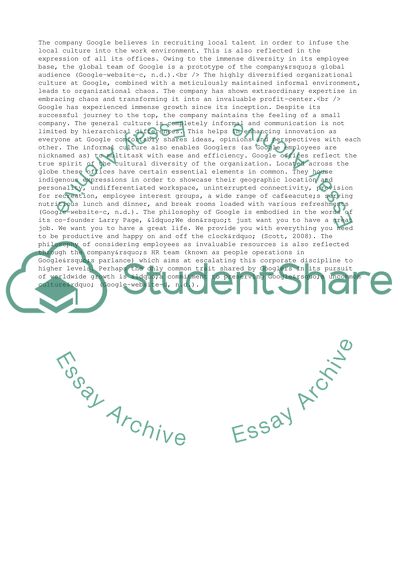Cite this document
(The Googles Organization Culture and Chaos at Google Case Study - 1, n.d.)
The Googles Organization Culture and Chaos at Google Case Study - 1. Retrieved from https://studentshare.org/management/1562105-drawing-on-relevant-theories-andor-theoretical-perspectives-critically-analyse-the-googley-way-of-working-case-study-within-googles-organisation-culture
The Googles Organization Culture and Chaos at Google Case Study - 1. Retrieved from https://studentshare.org/management/1562105-drawing-on-relevant-theories-andor-theoretical-perspectives-critically-analyse-the-googley-way-of-working-case-study-within-googles-organisation-culture
(The Googles Organization Culture and Chaos at Google Case Study - 1)
The Googles Organization Culture and Chaos at Google Case Study - 1. https://studentshare.org/management/1562105-drawing-on-relevant-theories-andor-theoretical-perspectives-critically-analyse-the-googley-way-of-working-case-study-within-googles-organisation-culture.
The Googles Organization Culture and Chaos at Google Case Study - 1. https://studentshare.org/management/1562105-drawing-on-relevant-theories-andor-theoretical-perspectives-critically-analyse-the-googley-way-of-working-case-study-within-googles-organisation-culture.
“The Googles Organization Culture and Chaos at Google Case Study - 1”. https://studentshare.org/management/1562105-drawing-on-relevant-theories-andor-theoretical-perspectives-critically-analyse-the-googley-way-of-working-case-study-within-googles-organisation-culture.


